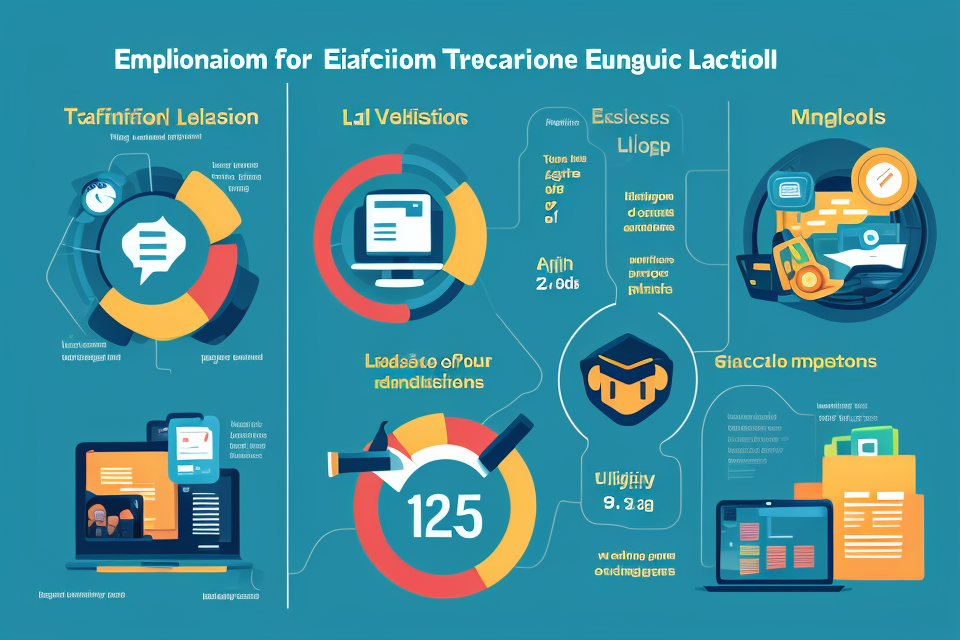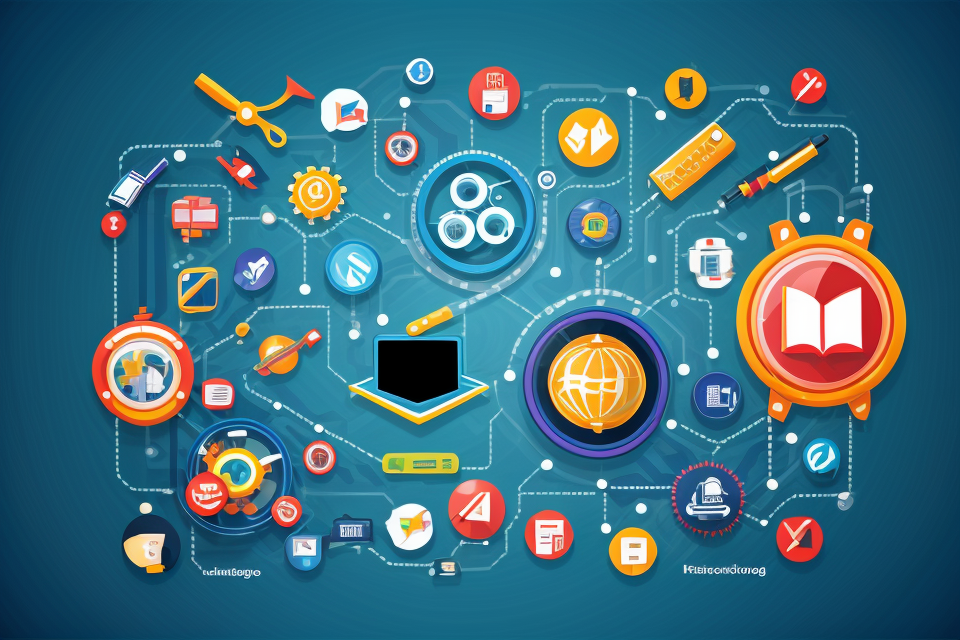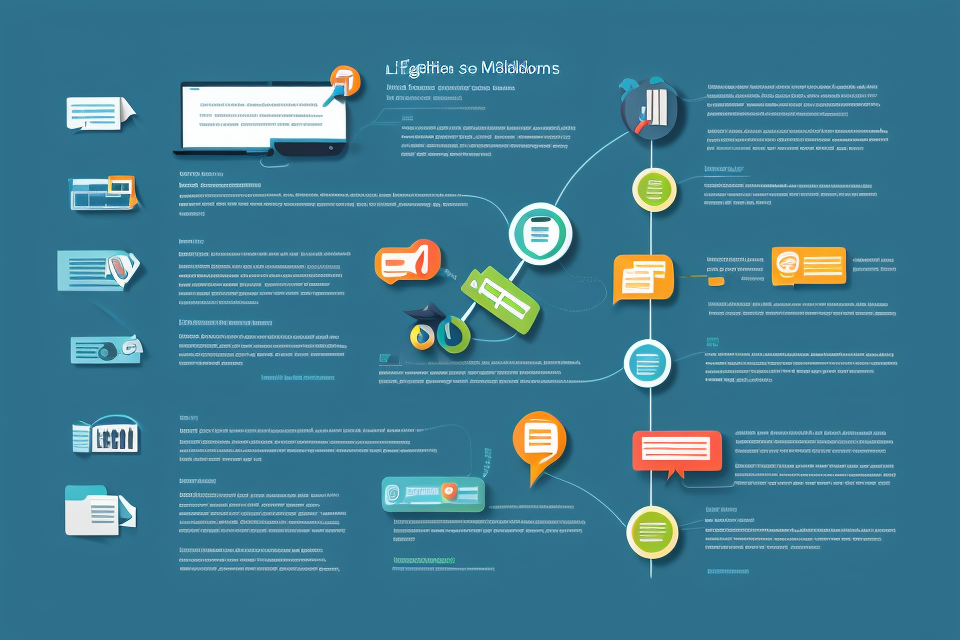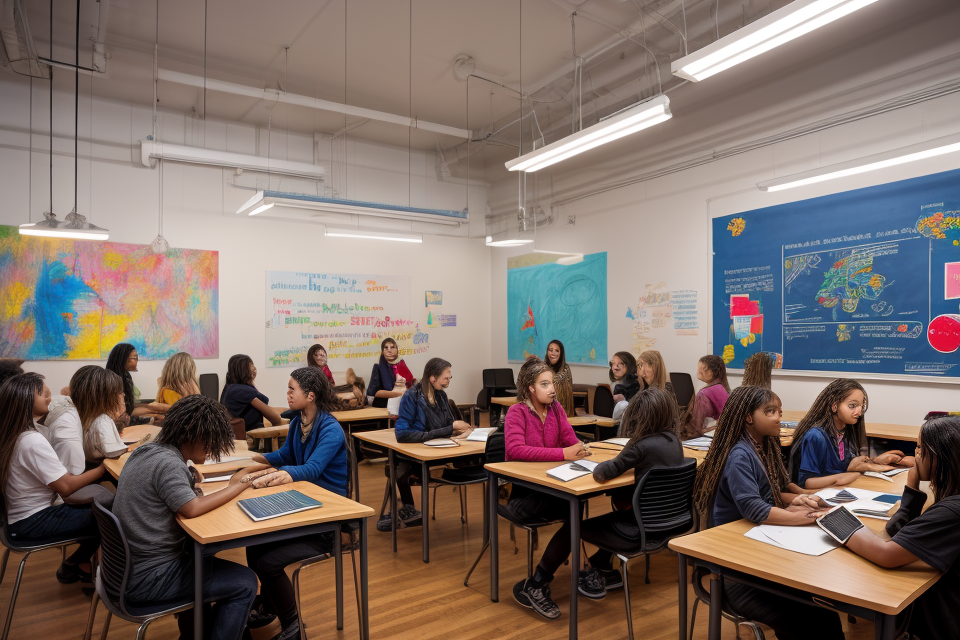
Artificial Intelligence (AI) has the potential to revolutionise education by providing personalised learning experiences, automating administrative tasks, and enhancing teacher’s effectiveness. With the integration of AI in education, students can receive customised learning experiences, receive real-time feedback, and improve their understanding of complex concepts. Furthermore, AI can also assist teachers in identifying student’s strengths and weaknesses, enabling them to provide targeted support and improve student outcomes. This comprehensive overview will explore the various ways AI is transforming education and its potential impact on the future of learning.
The Role of Artificial Intelligence in Education
Advantages of AI in Education
Personalized Learning
Artificial intelligence (AI) has the potential to revolutionize the way we approach education by providing personalized learning experiences for students. By analyzing data on student performance, AI can identify areas where a student may be struggling and provide targeted interventions, such as additional practice problems or one-on-one tutoring. This approach allows students to learn at their own pace and receive the support they need to succeed.
Improved Assessment and Evaluation
AI can also help educators to assess and evaluate student performance more effectively. By using machine learning algorithms to analyze data on student performance, educators can identify patterns and trends that may indicate areas where a student needs additional support. This can help educators to tailor their instruction and provide more targeted interventions, which can lead to improved student outcomes.
Enhanced Teacher Productivity
Another advantage of AI in education is that it can help teachers to be more productive and efficient. By automating tasks such as grading and lesson planning, teachers can spend more time working directly with students and providing individualized support. This can help to reduce teacher burnout and improve student outcomes.
Access to Educational Resources
Finally, AI can help to increase access to educational resources for students in remote or underserved areas. By providing online learning platforms and resources, AI can help to bridge the gap between these students and their peers in more affluent areas. This can help to ensure that all students have access to high-quality educational opportunities, regardless of their location or background.
Challenges and Limitations of AI in Education
Ethical Concerns
As AI becomes increasingly integrated into education, ethical concerns have emerged regarding the potential misuse of data and privacy issues. One major concern is the possibility of biased algorithms that could perpetuate existing inequalities and discriminate against certain groups of students. Educators and policymakers must carefully consider the ethical implications of AI in education and establish guidelines to ensure that these technologies are used responsibly.
Digital Divide
The use of AI in education also highlights the digital divide, which refers to the disparity in access to technology and digital resources between different socioeconomic groups. While AI has the potential to enhance learning experiences and improve educational outcomes, it may exacerbate existing inequalities if some students do not have access to the necessary technology or digital resources. Therefore, it is crucial to address the digital divide and ensure that all students have equal access to AI-powered educational tools and resources.
Integration and Implementation Challenges
Another challenge of AI in education is the integration and implementation of these technologies in the classroom. Educators must be trained to effectively use AI-powered tools and resources, and schools must have the necessary infrastructure and support systems in place to facilitate the integration of AI. Moreover, AI should be integrated in a way that complements and enhances existing teaching methods, rather than replacing them entirely.
Data Privacy and Security
AI in education relies heavily on data collection and analysis, which raises concerns about data privacy and security. Educators and policymakers must ensure that student data is collected, stored, and used in a responsible and secure manner. It is essential to establish clear guidelines and regulations regarding data privacy and security to protect students’ personal information and prevent misuse of data.
AI-Powered Tools and Technologies in Education
Virtual Learning Environments
Adaptive Learning Systems
Adaptive learning systems are designed to personalize the learning experience for each student by adjusting the pace and content of the lesson based on their individual needs and abilities. By using AI algorithms, these systems can analyze student data such as quiz scores, completion rates, and time spent on assignments to identify areas where the student may be struggling. The system then adjusts the learning path accordingly, providing additional resources or more challenging content to keep the student engaged and learning.
Intelligent Tutoring Systems
Intelligent tutoring systems (ITS) use AI to provide personalized instruction to students. These systems use a combination of student input and machine learning algorithms to provide customized feedback and guidance to students. ITS can adapt to the student’s learning style and pace, providing additional explanations or more challenging content as needed. ITS have been shown to be effective in improving student performance, particularly in math and science.
Gamification and Simulation
Gamification and simulation are used to make learning more engaging and interactive. By incorporating game-like elements such as points, badges, and leaderboards, students are motivated to complete tasks and learn new concepts. AI can be used to create more realistic and challenging simulations, allowing students to practice skills in a safe and controlled environment. For example, simulations can be used to teach medical students how to perform surgery or pilots how to fly a plane. These simulations can be tailored to the student’s skill level, providing a realistic and challenging experience that promotes learning and mastery.
Natural Language Processing
Chatbots and Language Learning
One of the most prominent applications of natural language processing in education is the development of chatbots that assist in language learning. These chatbots are designed to engage learners in conversational practice, allowing them to interact with a virtual partner and improve their speaking and listening skills. The chatbots use machine learning algorithms to recognize and respond to user input, providing feedback and guidance as needed. This technology has proven to be highly effective in enhancing language learning, particularly for those who struggle with traditional classroom settings.
Text Analysis and Sentiment Analysis
Another application of natural language processing in education is text analysis and sentiment analysis. This technology is used to analyze large volumes of text data, such as student essays, social media posts, and online discussions, to identify patterns and trends. Sentiment analysis can be used to gauge student engagement and identify areas where students may be struggling with the material. Text analysis can also be used to assess writing skills and provide feedback on grammar, structure, and style. This technology has the potential to revolutionize the way educators assess student learning and provide feedback, allowing for more personalized and targeted instruction.
Automated Essay Scoring
Automated essay scoring is another application of natural language processing in education. This technology uses machine learning algorithms to analyze student essays and provide automated feedback on grammar, syntax, and content. The system evaluates the essay against a set of predefined criteria and assigns a score based on the level of proficiency demonstrated. This technology has the potential to save educators time and reduce subjectivity in the grading process, allowing for more objective assessment of student writing skills. However, there are concerns about the accuracy of automated essay scoring and the potential for it to replace human evaluation and feedback.
Predictive Analytics
Student Success Prediction
- Machine learning algorithms analyze student data to predict academic performance
- Data sources include attendance records, assignment grades, and test scores
- Predictive analytics can identify students who are at risk of falling behind and provide early intervention
- Teachers can use this information to personalize instruction and provide targeted support
At-Risk Student Identification
- Predictive analytics can identify students who are at risk of dropping out or struggling academically
- Data sources include attendance records, behavior incidents, and course grades
- Early identification of at-risk students allows for targeted interventions to improve academic success and engagement
- Interventions may include additional tutoring, counseling, or social-emotional support
Dropout Prediction
- Predictive analytics can identify students who are at risk of dropping out
- Data sources include attendance records, course grades, and engagement metrics
AI and Teacher Education
Preparing Teachers for the AI Era
In order to effectively integrate artificial intelligence (AI) into education, it is essential that teachers are equipped with the necessary knowledge and skills to do so. This section will explore the ways in which teachers can be prepared for the AI era.
AI Literacy for Teachers
Teachers must have a basic understanding of AI and its applications in education in order to effectively integrate it into their teaching practices. This includes understanding the various types of AI, such as machine learning and natural language processing, and their potential uses in the classroom. Additionally, teachers should be familiar with the ethical considerations surrounding AI and its use in education.
Professional Development Programs
Professional development programs can play a crucial role in preparing teachers for the AI era. These programs can provide teachers with the opportunity to learn about AI and its applications in education, as well as hands-on experience with integrating AI into their teaching practices. Professional development programs can also help teachers stay up-to-date with the latest developments in AI and its applications in education.
Integration of AI in Teacher Education Curriculum
In order to ensure that all teachers are equipped with the necessary knowledge and skills to integrate AI into their teaching practices, it is important that AI be incorporated into teacher education curriculums. This can include coursework on the basics of AI and its applications in education, as well as hands-on experience with integrating AI into teaching practices. By incorporating AI into teacher education curriculums, educators can ensure that they are prepared to effectively use AI to enhance student learning.
Collaboration between Teachers and AI
Teacher-AI Partnership
The integration of AI in education has opened up new possibilities for collaboration between teachers and AI. In a teacher-AI partnership, AI systems can support teachers in various aspects of their work, such as grading, providing feedback, and identifying student needs. By offloading these tasks, teachers can focus on more important aspects of teaching, such as designing and delivering engaging lessons.
Supporting Teachers in Lesson Planning and Delivery
AI can also support teachers in lesson planning and delivery. For example, AI can analyze student data to provide insights into student learning and suggest personalized learning paths. This can help teachers tailor their instruction to meet the individual needs of their students, resulting in more effective teaching and learning.
Additionally, AI can support teachers in delivering lessons by providing multimedia content, such as videos and images, that can enhance student engagement and understanding. This can help teachers create more interactive and engaging lessons, which can improve student learning outcomes.
AI as a Tool for Teacher Reflection and Growth
Finally, AI can be used as a tool for teacher reflection and growth. By analyzing teacher-student interactions, AI can provide feedback to teachers on their teaching practices, highlighting areas for improvement. This can help teachers reflect on their teaching and make adjustments to improve their effectiveness in the classroom.
Moreover, AI can provide teachers with personalized professional development recommendations based on their teaching practices. This can help teachers continuously improve their skills and knowledge, resulting in more effective teaching and learning.
Overall, the collaboration between teachers and AI has the potential to transform teaching and learning. By offloading routine tasks, providing personalized support, and facilitating teacher reflection and growth, AI can support teachers in creating more effective and engaging learning experiences for their students.
The Future of AI in Education
Emerging Trends and Opportunities
Expanding Role of AI in Personalized Learning
Artificial intelligence (AI) is increasingly being integrated into personalized learning systems, allowing for more tailored and effective educational experiences. AI-powered systems can analyze student data, such as learning progress and performance, to create customized learning paths and recommendations. This approach enables educators to identify and address individual student needs, ultimately improving educational outcomes.
Integration of AI in Open Educational Resources
Open Educational Resources (OERs) are teaching, learning, and research materials that are freely available online. AI can play a significant role in enhancing the quality and accessibility of OERs. By analyzing and categorizing OER content, AI can help educators identify the most relevant and high-quality resources for their students. Additionally, AI can facilitate the creation of adaptive learning systems that tailor OER content to individual students’ needs and learning styles.
AI for Social and Emotional Learning
Social and emotional learning (SEL) refers to the development of skills that enable students to understand and manage their emotions, build positive relationships, and make responsible decisions. AI can be used to support SEL by providing personalized feedback and guidance to students, analyzing student interactions to identify social dynamics and emotional triggers, and recommending strategies for promoting positive social and emotional development. As AI continues to evolve, it is likely to play an increasingly important role in supporting SEL initiatives and promoting well-rounded student success.
Preparing for the Future
Addressing Ethical Concerns
As AI continues to permeate the educational landscape, it is essential to address the ethical concerns that come with its use. Some of the ethical concerns include bias, privacy, and accountability. To mitigate these concerns, it is crucial to develop guidelines and policies that govern the use of AI in education.
Bridging the Digital Divide
The use of AI in education has the potential to widen the digital divide, as it requires access to technology and the internet. To bridge this divide, it is important to ensure that all students have access to technology and the internet, regardless of their socioeconomic status. This can be achieved by providing free or subsidized access to technology and the internet in schools and communities.
Developing Policies and Standards for AI in Education
As AI becomes more prevalent in education, it is crucial to develop policies and standards that govern its use. These policies and standards should address issues such as data privacy, security, and ethical concerns. They should also ensure that AI is used to enhance learning outcomes and not replace human teachers.
Building Capacity for AI Integration in Education
To integrate AI into education effectively, it is essential to build the capacity of teachers and students. This can be achieved by providing training and resources on how to use AI tools and platforms. It is also important to ensure that teachers are equipped with the necessary skills to teach AI and guide students in its use. Additionally, students should be taught how to use AI responsibly and ethically.
FAQs
1. What is artificial intelligence?
Artificial intelligence (AI) refers to the development of computer systems that can perform tasks that typically require human intelligence, such as learning, reasoning, problem-solving, perception, and natural language understanding.
2. How can AI revolutionise education?
AI has the potential to revolutionise education by providing personalised learning experiences, improving accessibility, enhancing student engagement, automating administrative tasks, and providing insights to educators for better decision-making.
3. What are some examples of AI applications in education?
Some examples of AI applications in education include personalised learning systems, educational games, intelligent tutoring systems, automated essay grading, speech recognition software, and virtual learning assistants.
4. How can AI help with personalised learning?
AI can help with personalised learning by analysing student data, such as performance, interests, and learning styles, to provide customised learning experiences that meet each student’s unique needs.
5. How can AI improve accessibility in education?
AI can improve accessibility in education by providing closed captioning, speech-to-text transcription, and other assistive technologies for students with disabilities or those who may not have access to traditional classroom environments.
6. How can AI enhance student engagement?
AI can enhance student engagement by providing interactive learning experiences, such as educational games, simulations, and virtual reality, that are engaging and relevant to students’ interests and learning styles.
7. How can AI automate administrative tasks in education?
AI can automate administrative tasks in education, such as grading, scheduling, and record-keeping, freeing up educators’ time to focus on more important tasks, such as teaching and student support.
8. How can AI provide insights for better decision-making in education?
AI can provide insights for better decision-making in education by analysing student data and providing educators with actionable information, such as early warning systems for at-risk students, personalised learning recommendations, and targeted interventions for struggling students.
9. Are there any potential drawbacks to using AI in education?
Potential drawbacks to using AI in education include concerns about privacy and data security, potential bias in AI algorithms, and the potential for AI to replace human educators.
10. What is the future of AI in education?
The future of AI in education is bright, with continued advancements in technology and the potential for AI to transform education in ways that were once thought impossible. As AI continues to evolve, it has the potential to improve educational outcomes, increase access to education, and provide more personalised and engaging learning experiences for students.


